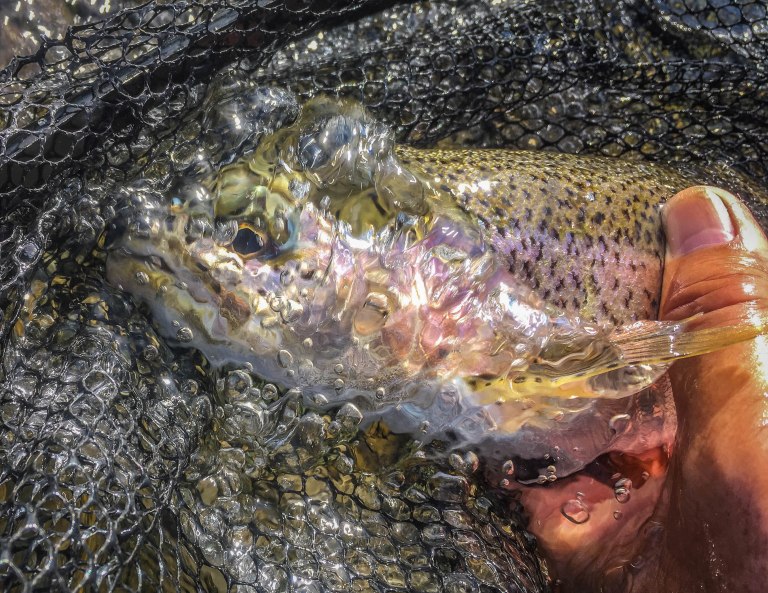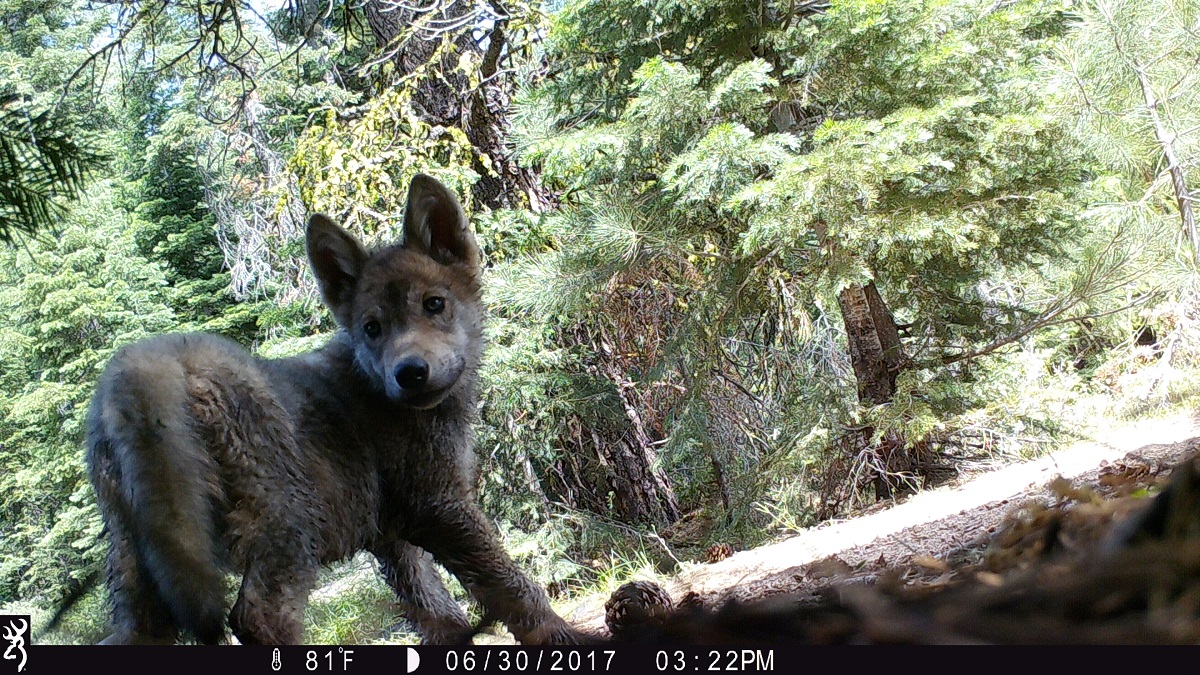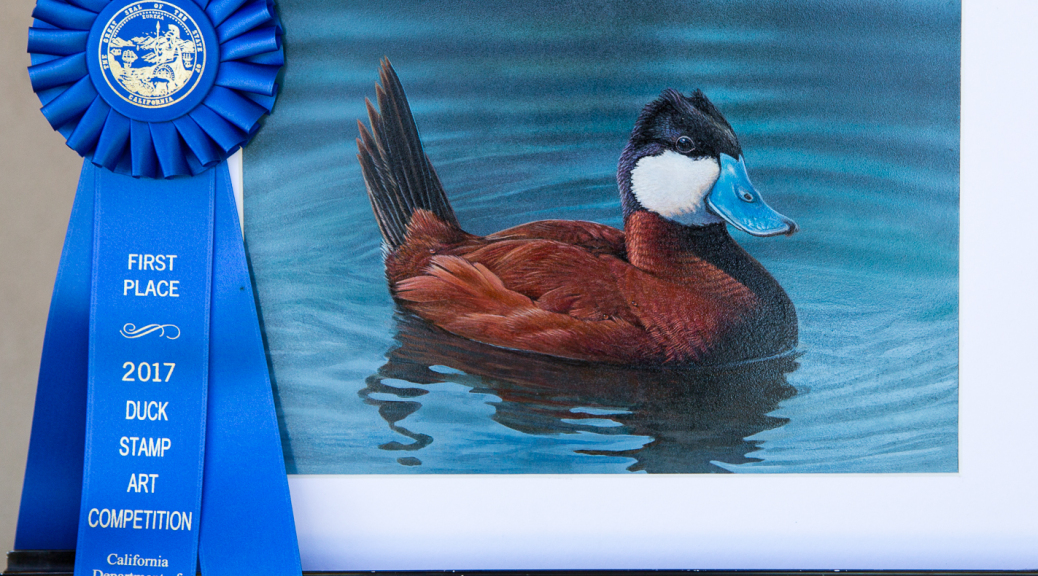Fish Report for 7-6-2017
Czech Nymphing and Weight Placement when Fly Fishing?

by Carrie Wilson
7-6-2017
Website
Question: I have a fly fishing question on rigging flies for nymphing. There is a very popular technique called “Bounce Nymphing,” which involves using three nymphs on short droppers off of a long leader with a weight attached to the bottom of the leader. The idea is to bounce the shot off of the stream bottom in order to keep the nymphs in the bottom of the water column. After the cast, a mend is thrown downstream to create a belly and loop in the fly line so that the current catches the line, and drags the rig along in the current. My interpretation of this technique (under California Code of Regulations Title 14, section 2.10 (b)(4)) is that it is an illegal setup, although it is one that’s widely used by guides in the Eastern Sierra. Can you clarify this, please? (Craig B., Oroville)
Answer: There are various ways to run a Czech nymph rig. According to California Department of Fish and Wildlife (CDFW) Senior Environmental Scientist and Heritage Wild Trout Program lead Jeff Weaver, “If the angler has a weight as their terminal tackle, and it is tied to the hook of the lowermost nymph, that would be illegal (CCR Title 14, section 2.10 (b)(4)). However, running a heavily weighted nymph as the bottom-most fly (maximum of three allowed) to get it to the stream bottom is allowed and is the most common form of Czech nymphing I am aware of.”
Crab fishing with both traps and snares simultaneously?
Question: Is it legal (and ethical) to drop a crab trap, and then use my fishing pole to cast out a crab snare? In other words, can I use them simultaneously? I am hoping to get the most out of my gear. (An avid fisher)
Answer: Yes. On a public pier, this would be the maximum amount of gear you could use at one time (CCR Title 14, section 28.65(b)).
Selling elk antlers from Idaho?
Question: I work at Moscow Hide and Fur in Moscow, Idaho (not Russia). We received an email recently referring us to your Q and A web site. It’s a great resource and we appreciate the time you put into it and all the other things you do. We think we may be one of the companies referred to in this previous question about elk antlers.
I remember that CDFW used to publish a brochure about selling wildlife. It parsed out the language of 3039(c) in a way that is more readable, the same way your answers do. I’ve asked people much smarter than me to read 3039(c) and they don’t seem to be able to agree exactly how to interpret it either. So since we are not sure, we strictly follow the information from the old brochure we have from CDFW. In one part of the brochure it states that no part of an elk or various other animals can be sold.
We assume the status of elk antlers has changed at some point since that brochure was printed, but not by statute. Can you please point me to someone who could clarify this to satisfy our lawyers? (Barrett S., Moscow, ID)
Answer: Statutes regulating trade in wildlife parts have changed over the years, so CDFW doesn’t recommend relying on a brochure that is out of print. As you mentioned, Fish and Game Code, section 3039 is the key statutory provision regarding elk to be aware of. Within this code section, subdivision (a) provides that:
(a) Except as otherwise provided in this section, Section 3087 [relating to unclaimed taxidermy mounts], Section 4303 [allowing sale of lawfully taken deer hide], another provision of this code, or a regulation adopted pursuant to this code, it is unlawful to sell or purchase a bird or mammal found in the wild in California.
It doesn’t matter whether a species is indigenous. This language would also apply to wild pigs that are not native, but “found in the wild.”
Subdivision (c) makes an exception for shed antlers and some other antlers, but complete antlers or mounts may not be sold. Here’s the statutory language:
(c) Shed antlers, or antlers taken from domestically reared animals that have been manufactured into products or handicraft items, or that have been cut into blocks or units which are to be handcrafted or manufactured into those articles may be purchased or sold at any time. However, complete antlers, whole heads with antlers, antlers that are mounted for display, or antlers in velvet may not be sold or purchased at any time, except as authorized by Section 3087.
Carrie Wilson is a marine environmental scientist with the California Department of Fish and Wildlife. While she cannot personally answer everyone’s questions, she will select a few to answer each week in this column. Please contact her at CalOutdoors@wildlife.ca.gov.
More Reports
CDFW Confirms Presence of Wolf Pack in Lassen County

7-5-2017
California Department of Fish and Wildlife (CDFW) biologists have captured and fitted a tracking collar to a female gray wolf...... Read More
Florida Artist Wins 2017 California Duck Stamp Art Contest

7-4-2017
A painting by John Nelson Harris of Groveland, Fla., has been chosen as the winner of the 2017 California Duck...... Read More

Website Hosting and Design provided by TECK.net